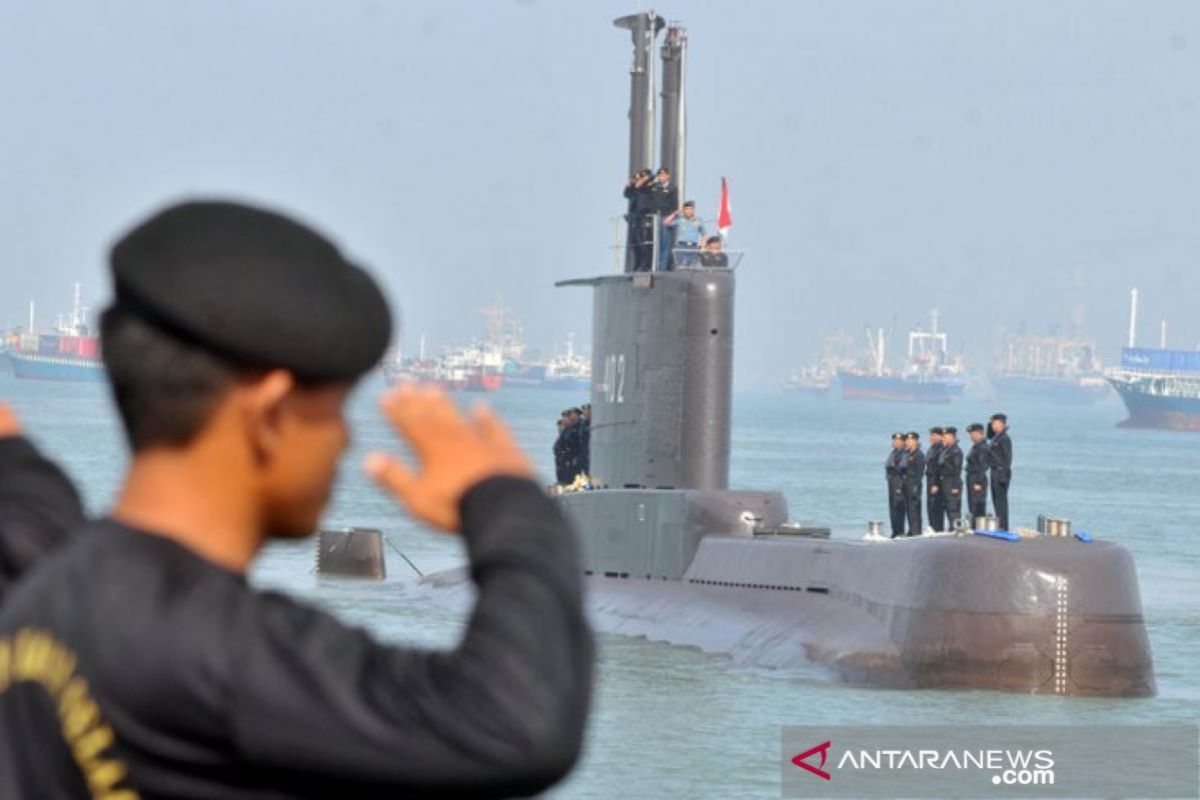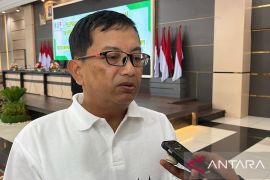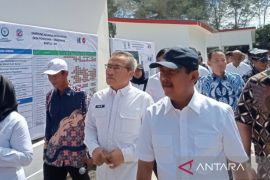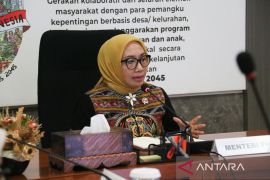This drive to hasten defense modernization has sparked some debate in the public and media regarding the need to allocate resources towards defense modernization, especially during a time of peace. The recurring question is: Why spend money on defense when there is little possibility of war in the foreseeable future? Some have even argued that there is no need to acquire arms because of the absence of the threat of open military conflict (Tempo, 2021). But this way of thinking ignores the nature of defense modernization, which demands careful planning and takes a long period of time to materialize.
Building an effective defense capability is not only limited to procuring modern weapons systems, but also to developing skilled human resources, supporting infrastructure, and operational doctrine needed to take it to its full potential. All of this takes time. First, let’s take weapons acquisition. While procuring small arms such as rifles and pistols can be a relatively quick affair, the same cannot be said for major weapons systems, such as fighter jets, tanks, and submarines. These weapons systems are highly complex and require a long time to build. Let's take one example — Indonesia’s acquisition of the 3 Type 209-1400 submarines from South Korea. The deal, worth $1.1 billion, was signed back in 2011, but only in March, 2021 did the Indonesian Navy (TNI AL) receive the final vessel of the batch, KRI Alugoro - 405. From this case alone, we can see the long time it takes to procure just three submarines for the navy — around a decade (from the signing of the purchase order in 2011 to the delivery of the final vessel in 2021).
Next, let’s take a look at developing skilled human resources, supporting infrastructure, and operational doctrine. Having a weapons system is just one part of the equation in developing an effective defense capability, the other is having skilled personnel to operate it, and the relevant infrastructure to support it. The fact is, training skilled personnel requires a considerable amount of time and resources. Officers must undergo several years of training at a military academy just to be able to operate weapons systems. Achieving a high level of proficiency requires further experience in real-world exercises and operations spanning years, or even decades, of service.
The learning curve is also not limited to individual personnel, but can encompass the defense organization as a whole. Modern weaponries can bring new sets of capabilities which may affect operational doctrine and deployment strategies. For example, modern weapons systems have network centric warfare capabilities, allowing different platforms whether on air, sea, or land to communicate and exchange data in real time, which can result in greater synergy between the branches of the armed forces. Harnessing this new capability to its full potential will require adjustments or changes in tactics, deployment strategies, or operational doctrines. All of which will take time.
The long time required to develop an effective defense capability necessitates such development to be implemented even during peacetime. Looking at the current regional strategic environment, we can see that for now there are no interstate conflicts. But, we also cannot claim that Indonesia’s strategic environment is a calm one. The Asia Pacific region is increasingly becoming an area of great power rivalry. Unlike during the Cold War, when the main confrontation between the United States and the Soviet Union took place in faraway Europe, the confrontation between China and the United States today is taking place much closer to home.
China’s rapid modernization of its military and its territorial ambitions in the East China Sea, Taiwan, and the South China Sea have prompted an arms buildup in the region. For the past two decades, the People’s Liberation Army Navy (PLAN) has transformed itself from a green water navy into a blue water force, equipped with aircraft carriers, dozens of destroyers and frigates, as well as over 60 nuclear- and diesel-powered attack submarines. During the same period of time, regional powers, such as Japan and South Korea, have also strengthened their naval capabilities, including by commissioning helicopter carriers.
To the south, Indonesia’s neighbor Australia is also in the midst of a massive naval buildup, including signing an $80 billion (AUD) submarine deal with France for the construction of 12 advanced diesel-electric submarines. Closer to home, our ASEAN neighbors have also increased their defense capabilities. Countries that two decades ago did not operate attack submarines, like Vietnam, Malaysia, and Myanmar, now have their own submarine fleets. Meanwhile, long time submarine user Singapore is modernizing its fleet with advanced German-built submarines. The impressive rate of arms buildup is also matched in air defense, with regional air forces acquiring advanced 4th generation multirole fighter jets, as well as introducing 5th generation stealth fighters to their inventory.
Just from a glance we can see that Indonesia’s strategic environment is not exactly benign. While it is true that for the moment there is no immediate threat of military conflict, we can also see that the Asia Pacific region is marred by the power rivalry between China and the United States, territorial disputes, as well as arms buildup. In this situation, Indonesia simply cannot afford to sit back and do nothing while the rest of the region is increasing their military capability all because there is no immediate threat of war.
As discussed before, developing an effective defense capability requires careful planning over a long period of time. The weapons we buy today might not arrive until a decade later, and the personnel using it will need years to learn to use it effectively. This necessitates arms modernization to be implemented even during peacetime in order to mitigate the possibility of being unprepared to respond to any possible crisis ten, twenty, or even thirty years in the future, which might be unforeseen for the moment. And foreseeing future crises has often proven to be difficult.
In 2010, nobody could have predicted that only four years later Crimea would be annexed by Russia. In 2015, no one could have foreseen the dramatic shift in political situation in Hong Kong, which doused any hope of a peaceful integration of Taiwan with China under the one country two systems scheme, or a global pandemic leading to China launching punitive trade sanctions on Australia. The uncertainty of future outlooks cannot be made the basis for withholding arms modernization. Just because Indonesia is not facing war today, and certain strategic outlooks do not mention the possibility of a war in the foreseeable future, can Indonesia afford to ignore modernizing its defense capabilities?
Ultimately, the goal of modernizing Indonesia’s defense capability is deterrence. A strong TNI that can effectively secure Indonesia’s borders from threats within and without will dissuade possible adversaries from attempting any hostile action in the first place. From this, it can be inferred that having a strong defense capability also plays a part in preventing war and keeping the peace. While it is hard to quantify the effectiveness of deterrence and its role in maintaining peace, we can at least see its role in preventing open conflict between two superpowers during the Cold War.
The massive conventional and nuclear military capabilities built by both the United States and the Soviet Union played a part in preventing an open conflict between the two. While this in turn led to many proxy conflicts across Asia, Africa, and Latin America, it at least prevented the breakout of a devastating global military conflict that would have surely occurred had the two superpowers ever gone to war. In Indonesia’s case, modernizing its armed forces during peacetime could help maintain the peace that it currently enjoys. By upgrading our defense capability to a level that is at least equal to that in the region could prevent the creation of an imbalance of power that could destabilize the region and result in armed conflict.
In the end, developing Indonesia’s defense capability must proceed at a pace that does not overly burden the economy. Following the loss of KRI Nanggala - 402, Defense Minister Prabowo acknowledged the dilemma faced by the government regarding the need to prioritize social and economic development, while at the same time maintaining defense capability to safeguard the nation’s sovereignty. But never has there been any doubt about the need to pursue both at the same time.
Economic development and defense capability are equally important, and both require careful planning and long-term commitment. For defense, procuring weapons systems, training skilled personnel, building support infrastructure, and developing relevant operational doctrines will require continued commitment lasting years or even decades.
Any illusion of current peace or the absence of war cannot be made as a basis to pause — or even ignore — arms modernization, as accurately predicting future crises has been proven to be difficult. Indonesia needs to continuously develop its defense capability, lest we be caught unprepared in a future crisis somewhere down the line. As former Defense Secretary of the United States, Donald Rumsfeld, famously said, "You go to war with the army you have, not the army you might want or wish to have at a later time."
While nobody in Indonesia wishes to go to war, we must ensure that in the event that we do, or need the military to respond to a crisis, we have the necessary military capabilities to successfully tackle any task and challenge, so that the security and interests of the nation can be maintained. That can be achieved through the continuous development of our defense capabilities, even during times of peace.
The views and opinions expressed on this page are those of the authors and do not necessarily reflect the official policy or position of ANTARA News Agency
*Teguh Ariffaiz Nasution is a graduate of the University of Indonesia's international relations department
Related news: Jokowi thankful for friendly nations' help in search for Nanggala
Related news: Rank promotion declared for 53 fallen crew members of Nanggala-402
Copyright © ANTARA 2021












